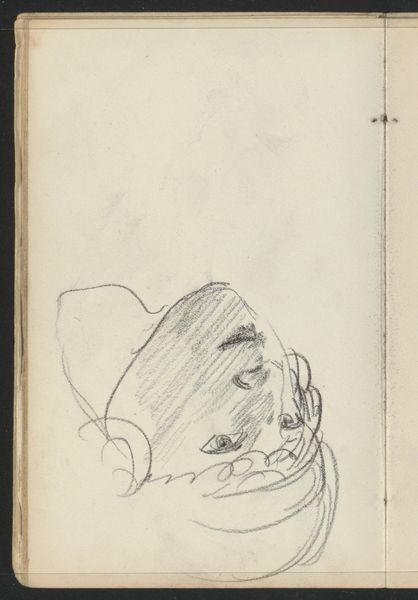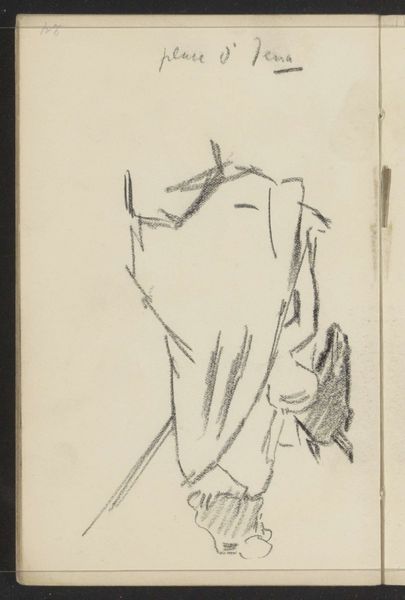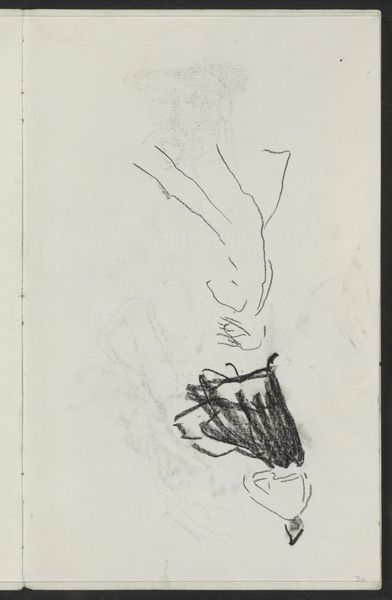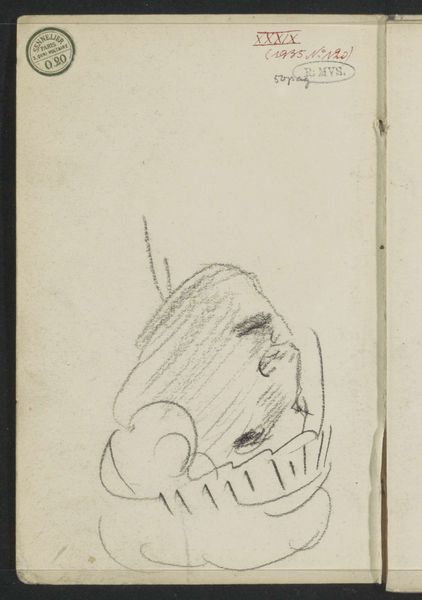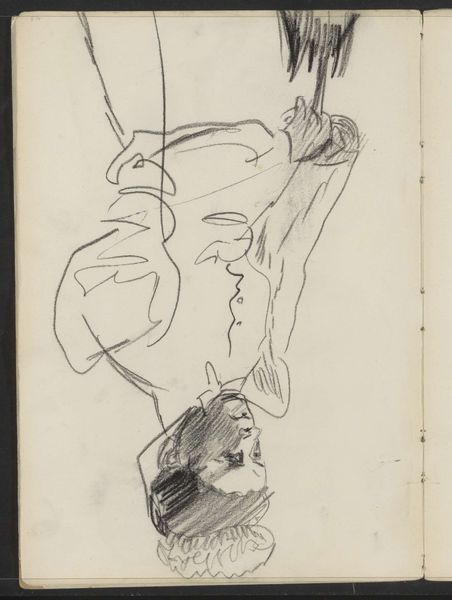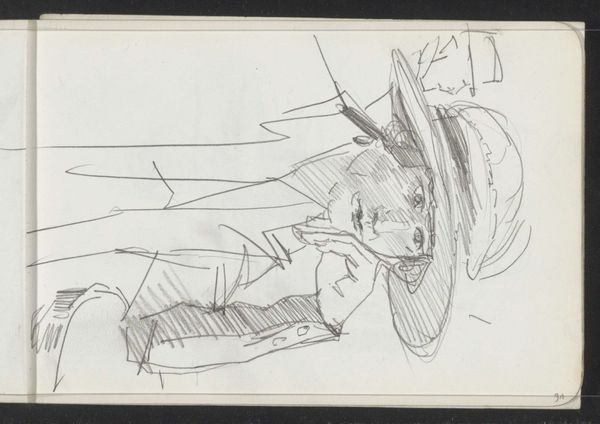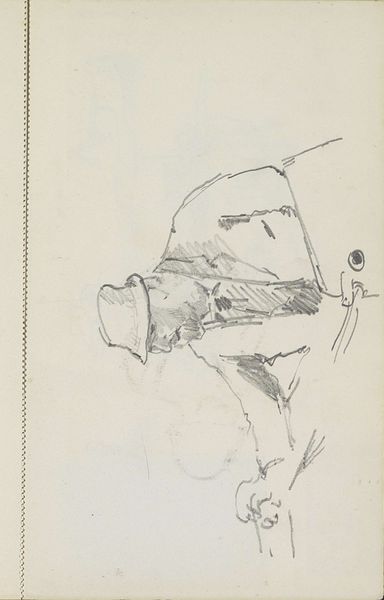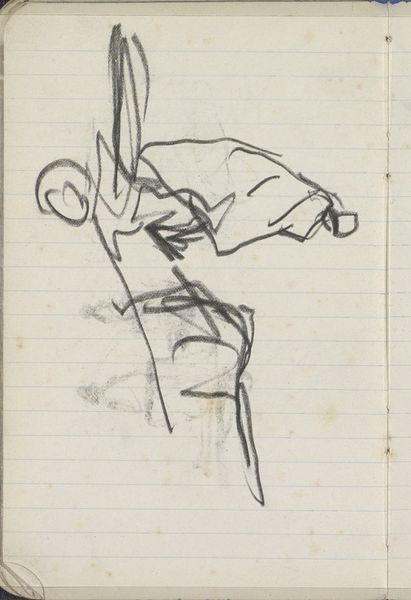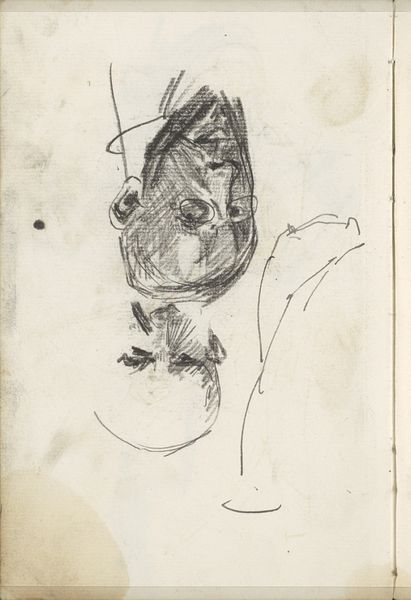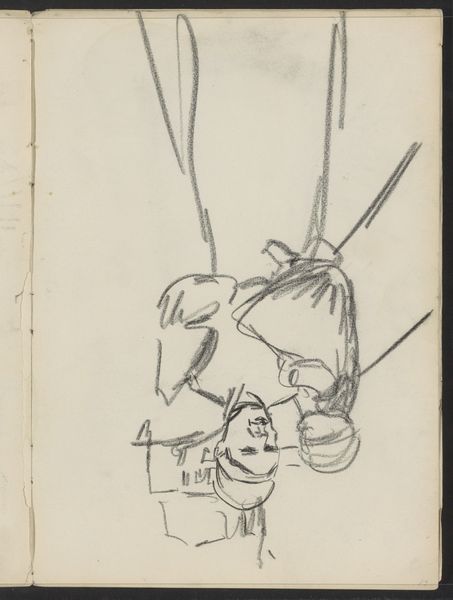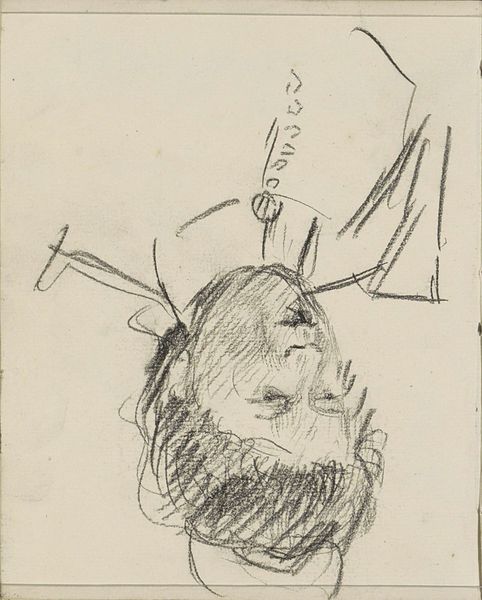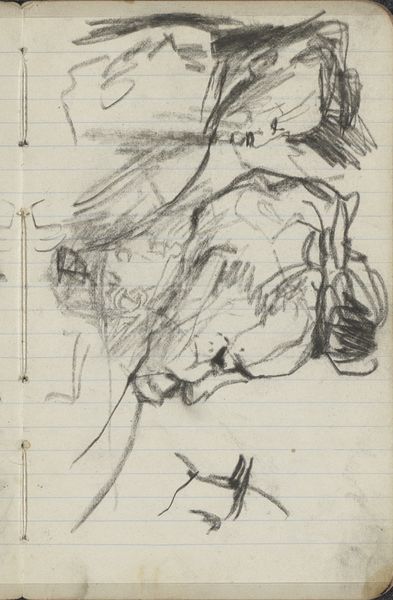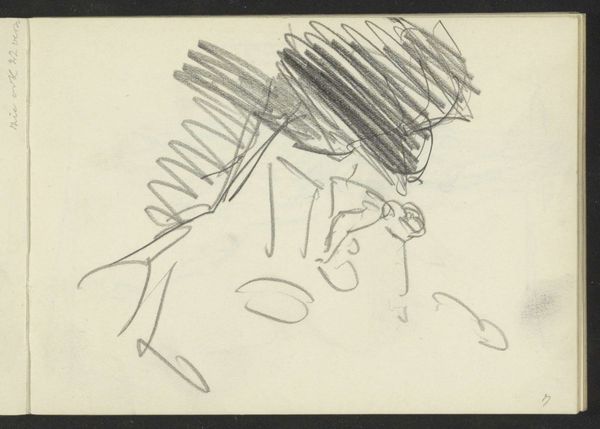
Copyright: Rijks Museum: Open Domain
Curator: The loose sketching has an immediacy; it almost feels as though we are catching a glimpse of a fleeting thought, perhaps during a private moment of contemplation or rest. Editor: Agreed. This drawing by Isaac Israels, called "Vrouwenhoofd met haarband," which translates to "Head of a Woman with a Hairband," appears to have been produced sometime between 1887 and 1934, judging from the Rijksmuseum's dating. What strikes me first is the material reality of its creation— the artist's hand at work on this sheet. Curator: I see it in the very character of the lines themselves. They have a certain frantic quality, wouldn't you agree? It seems a hurried exploration, searching, defining the subject through the repetition of the lines. But the hairband, in particular, looks as though it constricts. Symbolically, do you feel there’s a deeper meaning to the band and what that signifies for womanhood? Editor: Yes, certainly the iconography of headwear and adornment throughout art history often speaks of status, constraint, or identity. However, looking at it from a materialist perspective, you also need to think of it within the context of Israels' overall work. He was so committed to representing everyday life and ordinary subjects. We know the drawing involves pencil, and probably ink. It begs the questions, how would have readily accessible these supplies have been for him, and for what cost? Who supplied Israels with his materials? Was there even a commission involved for this particular piece, or was it one born of pure creative energy? Curator: That is important context, for sure. Even just considering the texture that he achieves using fairly common materials lends a weight of both light and shadow. There is also the vulnerability imbued by such a cursory impression, despite this. It’s quite powerful when taken as an almost hidden emotion laid bare by the artist. Editor: Exactly. These material explorations allowed artists like Israels to translate everyday experience and emotion. As such, looking at the drawing this way gives it almost the symbolic heft it didn't initially present. I think I came away from this encounter really respecting the ability for fairly rudimentary supplies to express something profound, especially given its lack of an explicitly symbolic theme or narrative. Curator: I agree, seeing past the symbolism reveals something even more fascinating about the artist's process and material expression. Thank you.
Comments
No comments
Be the first to comment and join the conversation on the ultimate creative platform.
